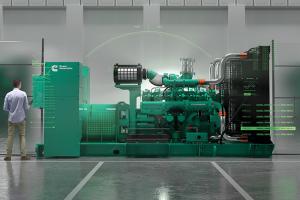Automated hand-hygiene system evolution continues

Automated hand-hygiene compliance monitoring (HHCM) systems continue to evolve, offering more precise tracking and recording capabilities to improve safety in health care facilities. The latest systems are designed to coach and educate staff instead of using punitive measures. They also have more contact tracing features to combat the realities of the COVID-19 pandemic.
Emphasis on data
Data collection from HHCM systems is important, experts agree. The correlation between proper hand hygiene and infection rates in hospitals is well documented. However, the Centers for Disease Control and Prevention reports that, on average, health care providers clean their hands less than half of the times required. “This performance is not intentional, but rather a function of manual systems, time constraints and emergent situations,” says Mary Kate Hagedorn, director of product at SwipeSense, Chicago.
Organizations that are focused on patient safety expect hospitals to demonstrate improvement by monitoring hand hygiene, setting goals and demonstrating progress. “While the gold standard continues to be direct observation of personnel by trained staff, the limitations and actual number of observations do not provide hospitals with a full picture to drive improvement,” says Tamara Cross, product management director at Purell SMARTLINK Technology, GOJO Industries Inc., Akron, Ohio.
Data collection is critical to compliance because it allows facilities to identify shortcomings and develop strategies to improve hand hygiene as well as patient and staff safety. “The data can measure the success of interventions with real-time compliance scores according to the World Health Organization’s Five Moments for Hand Hygiene guidelines and the Canadian Four Moments for Hand Hygiene,” says Martin McGonagle, general manager at SC Johnson Professional – Healthcare, Charlotte, N.C.
Vendors have reported positive results. Hagedorn notes that within the first 18 months of implementing SwipeSense to monitor hand-hygiene performance, an Illinois hospital improved its compliance rate by 15%, which coincided with a 12% decrease in health care-associated infections.
Improving compliance
The latest HHCM systems offer a host of new features. For example, Ecolab Inc., St. Paul, Minn., has released the second generation of its HHCM platform, which allows facilities to accurately record hand-hygiene events by individuals, holding each worker accountable for their compliance and providing guidance for improvement. New features include extended network coverage, a digital dashboard, reporting enhancements and expanded remote support capabilities.
Intelligent Observation, Miami, offers an HHCM system that uses near field magnetic induction, which allows it to record every compliance event in a health care facility 24/7/365, the company reports. The system operates on a stand-alone, self-contained network and infrastructure, with no access to or interface with other technology systems. “This eliminates any potential security breach to the hospital’s data through our system,” says CEO Seth Freedman. “Also, it does not require support from a hospital’s IT department.”
GOJO Industries Inc. offers the Purell SMARTLINK integrated monitoring system, which uses Bluetooth low energy (BLE) technology to capture worker-specific hand-hygiene events in real time. BLE technology reduces installation complexity and cost, and provides cloud connection options, including Wi-Fi, ethernet and on-site server, to help meet information technology (IT) requirements. It also produces customizable reports for individual, job role or group-level data.
Staff education and coaching can be tailored to each unit’s culture and workflow, while data management and analysis can help create and improve hand-hygiene initiatives. “GOJO has an open platform and can integrate with real time location systems (RTLSs) so that hospitals can achieve a higher return on investment with shared infrastructure across many use cases, such as hand hygiene, asset tracking, nurse call and contact tracing integration,” Cross says.
CenTrak, Newtown, Pa., offers an HHCM system that can be deployed as a stand-alone solution or in conjunction with additional enterprise location and sensing services, such as contact tracing, nurse call automation, asset management and emergency alerts. The application/user interface also is capable of integrating with Epic HL7 and Microsoft’s active directory.
CenTrak has introduced a universal drip tray that is secured below hospital soap dispensers. It replaces manufacturer drip trays and captures real-time activity using a proximity sensor that detects the presence of an object such as a hand with a transceiver that records usage of the dispenser. Used with CenTrak’s HHCM application and staff badges, it produces reports detailing compliance rates at the facility, departmental, group or individual level. “The drip tray is a great choice when CenTrak’s fully embedded sensors are not feasible,” says Melissa Berrios, clinical educator.
The solution from BioVigil, Ann Arbor, Mich., features onboard chemical sensing, which eliminates the need to replace or retrofit soap dispensers (or change soap product vendors) to work with an electronic HHCM system. It also registers hand-hygiene events and confirms that sanitizer is present on a caregiver’s hands when recording events. Detail and data sets are available for export, on an ad-hoc or automated schedule, in a variety of formats from the BioVigil data suite.
“The BioVigil solution identifies rooms that have been designated for special contact-isolation, hand-hygiene protocols,” says CEO Sanjay Gupta. “Different protocols, such as soap-and-water hand-washing, are applicable in such circumstances. BioVigil recognizes and accommodates these situations. Also, a reminder function embedded in the badge has demonstrated an increase of compliance to 97%-plus and 90%-plus reduction in cross-contamination situations.”
SC Johnson Professional offers the DebMed electronic hand-hygiene monitoring system, which tracks and monitors compliance through a three-step process. An electronically monitored dispenser captures hand-hygiene events and transmits the data via a stand-alone network to a dedicated DebMed server. The data is delivered via reports that provide insight into areas of improvement. “Facilities can use this as a coaching tool to develop strategies for compliance improvement while instilling a positive hand-hygiene culture,” McGonagle says. “The system is easy to implement and doesn’t require costly equipment or integration with hospital IT infrastructure.”
A coaching tool
The latest HHCM systems are used more as coaching tools than as punitive tools. For example, the Vitalacy automated hand-hygiene monitoring solution from Vitalacy, Los Angeles, features a SmartBand worn on the wrist that serves as a coaching tool. If a caregiver forgets to perform a hand wash or does not wash for a long enough duration, a vibration and text notification alerts them. These haptic taps lower the risk of alarm fatigue.
The SafeHaven personal hand-hygiene system from GP PRO, Atlanta, a division of Georgia-Pacific, is designed to offer encouragement and celebrate success to guide health care providers toward sustained compliance. The system measures the number of times the alcohol hand rub is used; it does not track missed hand-hygiene opportunities.
“We believe, and early product trials have shown, that positive influence provides longer lasting results,” says Nick Pivonka, health care category director. “In fact, those trials showed a 183% increase in hand-hygiene events with more than six months of sustained compliance improvement.”
Off-site facilities, a growing segment of the health care market, also are requesting more HHCM systems. Pivonka says that GP PRO is seeing a great deal of interest from facilities that provide outpatient surgery, long-term care and in-home patient care. “These are environments where direct observation and feedback can be impractical,” Pivonka says. “The portability and ease of use of the SafeHaven system allows for easy tracking of hand-hygiene compliance in such settings.”
Since March 2020, CenTrak has seen an increase in requests from urgent care centers as well as stand-alone surgery centers for both electronic HHCM and contact tracing applications. “It was fortuitous that CenTrak launched TruView, a location and analytics platform designed for senior living, in October 2019, just a few months before the COVID-19 pandemic began,” says Berrios.
“In the past, accurate location services were too expensive for the majority of senior living and long-term care facilities,” Berrios says. “The TruView platform monitors hand-hygiene compliance and automates contact tracing in those settings, which are facing some of the most devastating losses as a result of the pandemic. This solution is well positioned to help support the growing needs of off-site facilities.”
Combating COVID-19
Many manufacturers have upgraded their HHCM systems to combat the ongoing COVID-19 pandemic to improve the safety of patients, staff and visitors. Contact tracing and tracking movement within hospitals has become more important.
The nGage HHCM system from Proventix Systems, Birmingham, Ala., uses data collected from an existing hand-hygiene compliance platform to generate reports related to staff activity. This information is derived from active radio frequency identification badge activity as staff move throughout the hospital. “Having such data is important when determining who, when and how much time was spent inside patient rooms, allowing hospitals to trace COVID-19 activity and exposure information,” says Felicia Boyd, vice president of operations.
Stanley Healthcare, Waltham, Mass., has developed a new contact tracing solution that uses a mix of received signal strength indicators and other location technologies to identify when two badged individuals may have ventured close to each other. This helps hospitals trace potential contacts of people who test positive for the coronavirus. “Early in the pandemic, we developed several quick-deploy bundles of our solutions to enable hospitals to quickly expand key areas of their operations for the surge, such as asset management of added equipment and nurse calls for new care areas,” says Steve Elder, director of communications.
SwipeSense has introduced a contact tracing application in response to the need for faster, more accurate notification of contagious disease exposure events. Leveraging real-time, employee-level data on the SwipeSense platform, the system automatically captures all employee-to-patient and employee-to-employee contacts. This enables infection control and occupational health staff to generate a list of at-risk staff, patients and equipment with the click of a button, reducing the likelihood of spreading COVID-19 or other diseases within hospitals.
Janel Nour-Omid, CEO and cofounder of Vitalacy, says that as COVID-19 emerged, her team of engineers added contact tracing features to Vitalacy SmartBands. “We can monitor the frequency of close proximity between users via Bluetooth signals transmitted from the wearables. In addition, we place specific settings on COVID-19 rooms where special hand-hygiene protocols must be followed.”
Ecolab Inc. has seen growing interest in its contact tracing feature over the past year, according to Cheryl Littau, corporate scientist for research, development and engineering at Ecolab Healthcare. While the system had this functionality before the pandemic, its use has increased. “In addition, with many people working from home, our digital dashboards and data analytics enable visibility of hand-hygiene compliance and product use regardless of where system users are accessing that information.”
Continued improvement
Experts predict continued improvement in HHCM systems. However, much will depend on better engagement of front-line staff in the education, reminder and feedback elements of these systems.
“Measurement alone won’t improve compliance,” Pivonka says. “The collection of data alone won’t improve compliance. But providing hand-hygiene compliance education, reviewing individual results and providing guidance will support sustained compliance and improved patient outcomes over time.”
Neal Lorenzi is a freelance writer and regular contributor based in Mundelein, Ill.
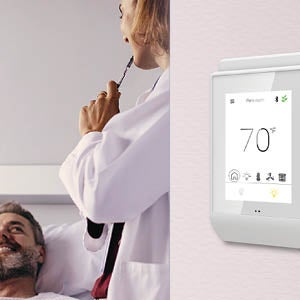
PROFESSIONAL ADVICE
A doctor dispenses and views information on an nGage unit. Proventix Systems
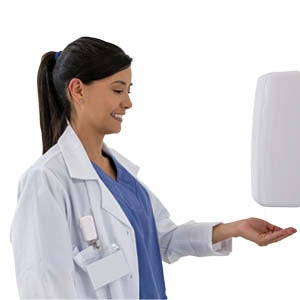
ACCURACY MATTERS
This HHCM system utilizes near field magnetic induction to accurately record hand-hygiene compliance events. Intelligent Observation
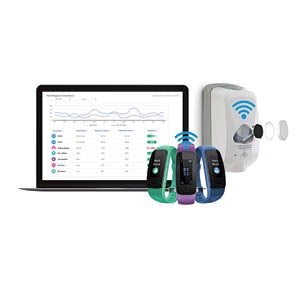
CONSTANT COACHING
The Vitalacy SmartBand provides real-time hand-hygiene coaching at point-of-care without disrupting workflow. Vitalacy
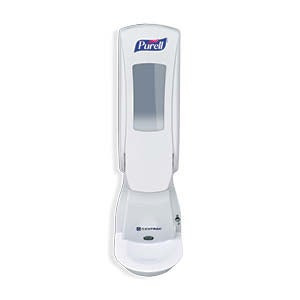
ALWAYS UPDATED
This unit’s universal drip tray captures real-time activity using a proximity sensor. CenTrak
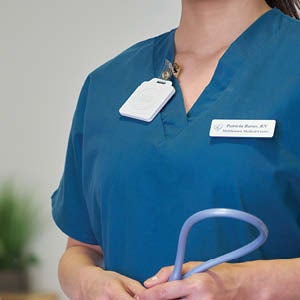
TEAM EFFORT
Hospital staff wear team badges that automatically record movement and location data without disrupting workflow. SwipeSense
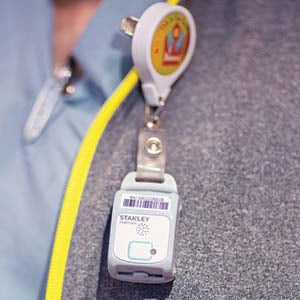
BADGE OF EXCELLENCE
This multifunction staff badge supports contact tracing, patient flow and other applications. Stanley Healthcare
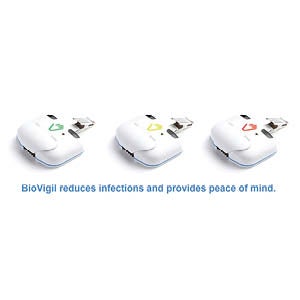
SPECIAL ATTENTION
This solution identifies hospital rooms that have been designated for special contact-isolation, hand-hygiene protocols. BioVigil
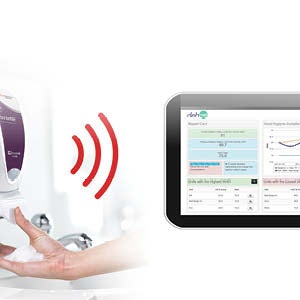
TIME FOR A CHANGE
The DebMed electronic hand-hygiene monitoring system provides data that helps hospitals drive lasting behavioral change. SC Johnson Professional
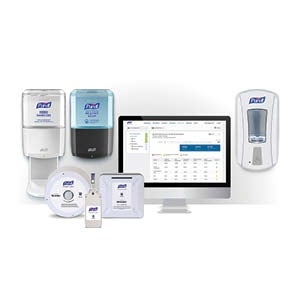
GET SMART
The Purell SMARTLINK integrated monitoring system provides direct, one-on-one feedback and coaching. Gojo Industries Inc.
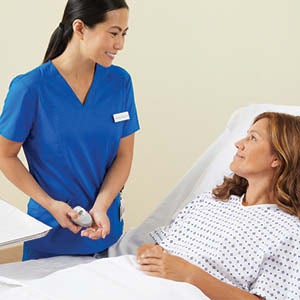
PERFECT FIT
The SafeHaven personal hand-hygiene system fits seamlessly into the clinical workflow to provide point-of-care hand hygiene. GP PRO


